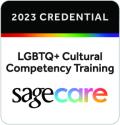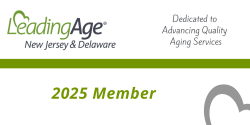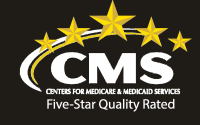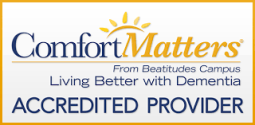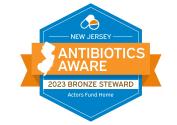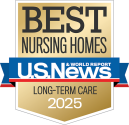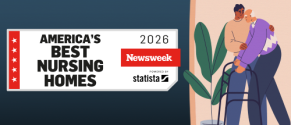Outbreak Response Plan
MANUAL: NURSING
FACILITY: ACTORS FUND HOME
DATE: REVISED SEPTEMBER 10, 2020
REVISED SEPTEMBER 28, 2021
REVISED SEPTEMBER 12, 2022
REVISED SEPTEMBER 21, 2023
REVISED DECEMBER 3, 2023
POLICY: Outbreak Response Plan
POLICY #:
POLICY
The protocol for isolating and cohorting infected and at risk residents in the event of an outbreak of a contagious disease until the cessation of the outbreak. The plan was done in accordance with the current guidelines from the Centers for Medicare and Medicaid (CMS), Centers for Disease Control (CDC), state and local guidance for infection prevention for the duration of the COVID-19 pandemic. The Outbreak Plan was developed based on the requirements outlined in ED 20-026, the Directive for the Resumption of Service in Long Term Care Facilities (LTC) and has been updated as per the new LTC document, ED 21-012 Directive for Resumption of Services in all Long-Term Care Facilities, updated December 22, 2022. This document supersedes ED 20-026.
PURPOSE
Prevention and control of an outbreak of a contagious disease until the cessation of the outbreak.
PROCESS
THE MAJOR ACTIVITIES OF THE PROGRAM ARE:
Core Practices of Infection Prevention
The Infection Control Program is comprehensive in that it addresses detection, prevention and control of infections among residents and staff.
- SURVEILLANCE OF INFECTIONS
There is on-going monitoring for infections among residents and staff and subsequent documentation of infections that occur. Routine monitoring of residents and staff to quickly identify signs of a communicable disease that could develop into an outbreak. - IMPLEMENTATION OF CONTROL MEASURES
Prevention of spread of infections is accomplished by use of Standard Precautions, Transmission Based Precautions and other barriers, appropriate treatment, and follow-up, and employee work restrictions for illness. - PREVENTION OF INFECTION
Staff and resident education is done to focus on risk of infection and practices to decrease risk. Policies, procedures and aseptic practices are followed by personnel in performing procedures and in disinfection of equipment. Immunizations are offered as appropriate to residents and personnel to decrease the incidence of preventable infectious diseases.
DIVISION OF RESPONSIBILITIES FOR INFECTION CONTROL ACTIVITIES
The Actors Fund Home has created an Infection Control Committee which will be ultimately responsible for planning, monitoring, evaluating, investigation, control, and prevention of health-care associated infections (HAIs) and outbreak occurrence of communicable diseases. The Team will develop a system of care that promotes sound and scientific infection prevention principles and practices. Partnering with the Medical Director, Administrator, Assistant Administrator, DON, and Infection Prevention Nurse (IPN) are Infection, Preventionist Consultant, Ms. Lucille Plantemoli and Infectious Disease Doctor, Dr. Ashwin Jathavedam. The Infection Prevention Committee will make rounds and meet on a monthly basis.
INFECTION PREVENTION NURSE
Responsibility is delegated to the Infection Prevention Nurse (IPN) to carry out the daily functions of the Infection Control Program. These functions are described in the IPN job description. The IPN has knowledge and interest in Infection Control.
AUTHORITY
The Infection Prevention Committee can take immediate and appropriate action to correct and deficiencies relating to infection control that creates hazardous conditions.
REPORTING
The IPN prepares infection reports and presents them to the Infection Prevention Committee. Problems are identified and actions are planned for resolution and presented to the Committee.
INFECTION PREVENTION
Core Infection Prevention and control practices must always be in place. Maintaining core infection prevention and control practices is key to preventing and containing outbreaks and is crucial in ensuing the delivery of quality, safe care. The facility’s designated individual with training in infection prevention shall assess the IP program by annually reviewing the Infection Prevention Plan and conducting internal quality improvement audits.
Refer to Outbreak Management Checklist from NJDHSS:
https://www.nj.gov/health/cd/documents/topics/NCOV/COVID_outbreak_checklist.pdf
Refer to Covid-19 Patient/Resident Management in Post-Acute Care Settings:
https://www.nj.gov/health/cd/documents/topics/NCOV/COVID-19_res_mngt_postacute_care.pdf
RESPIRATORY PROTECTION PROGRAM
The facility has developed and implemented a Respiratory Protection Program that complies with the Occupational Safety and Health Administration (OSHA) respiratory protection standards for employees. The program will include medical evaluations, training and fit testing
For the facility to meet the requirements of the Executive Directive No. 21-012, the facility will submit to the Department via email to:
LTC.DiseaseOutbreakPlan@doh.nj.gov
An Infection Control Employee attestation on facility letterhead from the administrator with the facility name and license number stating the facility has implemented a respiratory protection program that complies with the OSHA respiratory protection standard for employees.
AUDITING OF PPE, HAND SANITIZER AND CLEANING SUPPLIES
The facility will have an ongoing audit program for supplies that include PPE, hand sanitizer and cleaning supplies so that staff, residents, and family/visitors can adhere to recommended infection prevention and control practices.
An emergency stockpile of PPE, hand sanitizer and essential cleaning and disinfection will also be available.
The facility has essential cleaning and disinfection supplies on hand in the event of a supply chain disruption.
REPORTING TO THE NHSN PROGRAM
The facility is required to report, at minimum twice per week, COVID-19 cases, facility staffing, and supply information to the National Healthcare Safety Network (NHSN) Long Term Care Facility COVID-19 Module:
https://www.cdc.gov/nhsn/ltc/covid19/index/html.
- Counts of residents and facility personnel with suspected and antigen tested positive COVID-19.
- Counts of suspected and antigen positive COVID-19 related deaths among residents and staff.
- Resident beds and census.
- Staffing shortages.
- Status of personal protective equipment (PPE) and hand hygiene supplies.
STAFFING STRATEGY
The facility will have no staffing shortages and will not operate under a contingency nor crisis staffing plan. The facility will secure additional staff in the event of a new COVID-19 or other infectious disease outbreak.
COHORTING/RESIDENT PLACEMENT
Room Assignment/Placement:
- Private Room preferred.
- Cohort – When a private room is unavailable, a group of residents who are or are not colonized or infected with the same organism will be confined for their care to one area and to prevent contact with other residents.
- Place with an individual where no invasive procedures are performed or use of invasive equipment (e.g., catheters).
- Use disposable equipment (i.e., stethoscopes, blood pressure cuffs, etc.)
- A “STOP SIGN” will be placed at the door to alert staff and visitors to see the nurse before entering.
- Personal Protective Equipment (gown, gloves, hair nets, shoe covers, etc.) are available on the unit.
- An isolation cart with PPE and hand sanitizer will be placed at the entrance to each isolation room.
PPE REQUIREMENTS
Instruct staff, resident, his/her representative, and family/visitors regarding precautions and use of personal protective equipment (PPE). Staff, family and visitors will be educated on donning and doffing of PPE.
Staff will put on gown, N-95, goggles/face shield, and gloves upon entry to room of infected individual. Handle items contaminated with respiratory secretions (i.e., tissues) with gloves.
- Change personal protective equipment (PPE) and perform hand hygiene between contact with residents in the same room.
- Before leaving a patient/resident care environment:
- Remove gloves in the patient/resident’s room.
- Remove gown in the patient/resident’s room.
- Perform hand hygiene prior to leaving patient/resident’s room.
- Exit the patient/resident’s room.
- Remove eye protection.
- Remove mask/respirator.
- Perform hand hygiene.
- Put on source control.
GLOVES AND HANDWASHING:
- Review standard precautions.
- During care, if gloves contact highly infectious materials (e.g., feces, wound drainage, etc.), change them.
- After removing gloves, wash hands with antimicrobial agent for at least 20 – 30 seconds (Refer to Handwashing Policy).
GOWN:
- Review standard precautions. Follow Personal Protective Equipment (PPE) Protocol.
- Wear a gown when you anticipate clothing will be contaminated by the individual or contact with environmental surfaces or items in the individual’s room.
- When removing the gown follow Personal Protective Equipment (PPE) Protocol.
MASKS:
- N95 respirator masks will be used in the facility by staff to reduce the wearer’s exposure to airborne particles, from small particle aerosols to large droplets for direct resident care.
TRANSPORT:
- If an individual leaves their room, ensure that precautions are taken to minimize the risk of transmission of microorganisms (e.g., cover wounds, personal hygiene, and respiratory masks).
- Limit transport of such residents to essential purposes such as diagnostics and therapeutic procedure that cannot be performed in the resident’s room. Provide cover/containment of infected area when the resident is outside of his/her room. Residents will follow respiratory hygiene/cough etiquette. Staff will assist the resident with hand hygiene as needed.
- b. Notify the healthcare provider in the receiving area of the impending arrival of the resident and of the precautions necessary to prevent transmission; and
- For residents being transported outside of the facility, inform the receiving facility and the medi-van or emergency vehicle personnel in advance about the type of transmission-based precautions being used.
- Dedicate personal care equipment (thermometer, blood pressure cuff, stethoscope, etc.) or use disposable equipment when available.
- If use of common equipment is unavoidable, clean and disinfect item before use with another resident.
- Clean and disinfect frequently touched surfaces daily (i.e., doorknobs, bed rails, over-bed tables).
- Once the resident is no longer a risk for transmitting the infection (i.e., duration of the illness and/or can contain secretions) discontinue precautions.
EQUIPMENT:
Environmental Services Department staff will thoroughly clean and disinfect equipment.
- At a minimum, gloves will be worn during all cleaning and disinfection of equipment.
- When appropriate, the use of other barrier type personal protective equipment (PPE) will be used.
- Contaminated with blood or body fluids.
- When possible, dedicate the use of non-critical equipment to a single individual.
- If use of common equipment is unavoidable, thoroughly clean and disinfect using an EPA approved disinfectant Wipe, i.e., Oxivir Wipes, according to manufacturer’s instructions and facility’s policies and procedures.
- According to the regular cleaning schedule.
TRAINING:
The facility will educate residents, staff, and family/visitors about COVID-19, current precautions being taken in the facility, and protective actions. The facility will train and provide staff with all recommended COVID-19 PPE, to the extent PPE is available, and consistent with CDC guidance on optimization of PPE.
TRANSFERS:
- The facility shall implement universal source control for family/visitors and staff in the building. All residents, whether they have COVID-19 symptoms or not, must practice source control when around others (surgical mask) in accordance with CDC guidance.
- The facility will separate COVID-19 positive and negative residents in accordance with NJDOH guidance. A resident is considered recovered from COVID-19 only after they have met the criteria for discontinuation of isolation as defined by the NHJDOH and CDC guidance.
- The facility will continue to follow current NJDOH orders, guidance and directives on admissions and readmissions. Facilities may receive residents who were tested prior to admission transfer or shortly thereafter, in accordance with NJDOH guidance. The facility will take appropriate actions on the results including, but not limited to, the guidance below.
- COVID-19 diagnostic test results must be provided (in addition to other pertinent clinical information to the receiving facility for any transferred resident upon receipt of lab test.
- Upon identification of a case of COVID-19 in a resident who was recently admitted (within 14 days), the receiving facility must provide these results back to the sending facility to allow for the appropriate response and investigation.
COVID-19 TESTING PLAN FOR ALL STAFF AND RESIDENTS
RESIDENT AND STAFF TESTING
Testing Procedures and Frequency:
- Residents will be tested bi-weekly with an antigen test.
- Staff will be tested when necessary with an antigen test.
- Post-testing protocols for residents such as cohorting of residents and separation of those with antigen test confirmed COVID-19 infection from others. (Refer to Cohorting above)
- Procedures to obtain staff authorizations for release of antigen test results to the facility as to inform infection control and prevention strategies.
- Work exclusion of staff who test positive for COVID-19 infection, refuse to participate in COVID-19 testing, or refuse to authorize release of their testing results to the facility, until such time as such staff undergoes testing and the results of such testing are disclosed to the facility.
- Return to work protocols after home isolation for staff who test positive, as per the current NJDHSS Algorithm.
- Address staffing (including worker absences).
REPORTING
The facility will submit the following information in a prescribed format through the portal designated by the Office of Emergency Management (“OEM”) and be consistent with available CDC and DOH public health guidance:
- Testing dates;
- Numbers of staff and residents that have been tested.
- Staff authorizations for release of test results to the facility so as to inform infection control and prevention strategies.
- Work exclusion of staff who have tested positive for the COVID-19 infection, refuses to participate in COVID-19 testing, or refuse to authorize release of their testing results to the facility, until such time as such staff undergoes testing and the results of such testing are disclosed to the facility.
- Protocols for returning to work after home isolation for staff who tested positive.
- Plans to address staffing (including worker absences) and facility demands due to the outbreak.
- Aggregate testing results for the staff and residents populations;
- Any other information requested by DOH.
- Any and all records related to COVID-19 testing protocols and implementation by the facility shall be made available to DOH, upon request.
- If a resident refuses to undergo COVID-19 testing, then the facility shall treat the resident as a “Person Under Investigation”, make a notation in the resident’s chart, notify any authorized family members or legal representatives of this decision, and continue to check temperature on the resident at least twice per day. Onset of temperature or other symptoms consistent with COVID-19 require immediate cohorting. At any time, the resident may rescind their decision not to be tested.
Testing shall occur as follows:
The facility shall submit the following information in a prescribed format through the National Healthcare Safety Network (NHSN) Long-Term Care Facility Covid-19 Module:
- Testing dates.
- Numbers of staff and residents that have been tested;
- Aggregate testing results for the staff and resident populations.
- Any other information requested by DOH.
Any and all records related to COVID-19 testing protocols and implementation by the facility shall be made available to DOH, upon request.
The facility submission of attestations to DOH and information submitted to OEM regarding COVID-19 testing, will be made publicly available and tracked on the NJ COVID-19 information Hub website.
All inquiries regarding reporting of Covid-19 can also be sent to the Office of LTC Resiliency at OLTCR@njlincs.net.
RESIDENT/STAFF ELIGIBILITY
Residents and staff who has or may have been exposed to SARS-COV-2 within the incubation period for COVID-19 (pursuant to current guidelines), and who meets one of the following conditions:
- Resident/Staff who had close contact (within 6 feet for at least 15 minutes) with someone who tests positive for COVID-19 (with or without symptoms).
- Healthcare Facilities Workers (with or without symptoms).
- Resident/Staff with symptoms of COVID-19 infections, including fever, cough, shortness of breath, chills, muscle pain, recent loss of taste or smell, vomiting or diarrhea and/or sore throat.
- Populations identified by the Department of Health for surveillance purposes at the discretion of the Department.
- Resident/Staff without symptoms of COVID-19 infection who are prioritized by health departments or clinicians, for any reason.
INFORMATION ON COLLECTING THE SPECIMEN:
- Prior to collecting the specimen from the Resident/Staff, the tester shall provide information to the patient receiving the testing, which shall include but is not limited to the following:
- Information on how and when to obtain test results.
- Information for contacting the local health official with the jurisdiction where the resident/staff resides.
- Information on next steps to for the resident/staff to take, including:
- Information on obtaining follow-up medical care or to address questions about a diagnosis if the resident/staff tests positive for COVID-19;
- Information about actions to be taken in accordance with guidance as issued and/or amended by the Centers for Disease Control and Prevention (“CDC”) and/or New Jersey Department of Health.
SPECIMEN COLLECTION, TESTING AND TEST RESULTS
- Testers may collect a specimen for a SARS-COV-2 molecular test approved by the U.S. Food and Drug Administration (“FDA”), authorized by the FDA through an Emergency Use Authorization or approved by the New Jersey Clinical Laboratory Improvement Services as permitted by the “FDA”.
- Preparation to collect a specimen:
- Ensure correct testing materials according to manufacturer instructions and/or the laboratory who will be performing the test.
- Ensure appropriate personal protective equipment for tester to administer the test such as gloves, gowns, N95 or higher respirator (or surgical mask should a respirator not be available) and eye protection (goggles or face shield).
- Instruction to collect a specimen
- By licensed healthcare provider, or trained, supervised personnel.
- Follow manufacturer-specific and/or laboratory-specific instructions for specimen collection.
- Follow CDC guidelines for Collecting, Handling, and Testing Clinical Specimens for Resident/Staff for Coronavirus Disease 2019, as amended and supplemented.
- The nurse conducting a COVID-19 antigen test on a specimen collected shall report the test results to the facility’s DON.
- Follow-up:
- Positive and negative results must be reported by the facility via the New Jersey Department of Health’s Communicable Disease Reporting and Surveillance System or other methods prescribed by the New Jersey Department of Health.
(New Jersey Department of Health Standing Order for COVID-19 Testing – Control Number: 2020-01)
NOTIFICATION OF RESTRICTED AND LIMITED VISITS:
COMMUNICATION
The facility shall communicate through multiple means to inform individuals, including non-essential healthcare personnel, of the visitation restrictions, such as through signage at entrances/exits, letters, emails, phone calls, and recorded messages for receiving calls.
VISITATION
The Actors Fund Home has sought ways to permit family/visitors under certain well-defined circumstances. In compliance with the State of New Jersey Department of Health and CDC. The Actors Fund Home has established a policy with controlled parameters that will help continue to protect our residents from potential exposure to coronavirus while remaining in compliance.
Visitation shall be allowed for all residents as per CMS QSO-20-39-NH, revised September 23, 2022, and in accordance with the revised FAQs September 23, 2022. AL and Dementia Care shall follow the CMS guidance as outlined above.
Upon arrival family/visitors will need to sign into the Accushield, the family/visitors will be asked to sanitize or wash their hands and will need to wear a “tight fitting mask” which is a surgical mask and not a cloth mask, as PPE requirements.
PURPOSE
Balancing COVID-19 safety and visitation restrictions with the well-being of residents in the facility is an urgent priority for the Actors Fund Home
We recognize that isolation has serious impact on the health and wellbeing of our residents. Until now, the focus on keeping residents connected with family/visitors has centered on technology (i.e., Zoom, FaceTime, etc.), however this does not fully substitute for in-person visits. The Actors Fund Home believes the risk of COVID-19 transmission in our facility and the need for family/visitors interactions can be balanced under the following:
PROCESS
The facility shall screen all family/visitors entering the facility and all staff at the beginning of each shift.
The facility will actively screen all staff/vendors/family/visitors entering the building (except EMS personnel) for signs/symptoms of COVID-19 or exposure to persons with confirmed COVID-19.
Screening will include:
- Temperature checks including subjective and/or objective fever equal to or greater than 100.4 F.
- Family/visitors and staff will complete a questionnaire about symptoms and potential exposure which shall include at a minimum:
- Whether in the last 14 days, the family/visitors has had an identified exposure to someone with a confirmed diagnosis of COVID-19, someone under investigation for COVID-19, or someone suffering from a respiratory illness.
- If the family/visitors has been diagnosed with COVID-19 and has not yet met criteria for the discontinuation of isolation per guidance issued by NJDOH and CDC.
- Whether in the last 14 days, the family/visitors has returned from a state on the designated list of states under the 14-day quarantine travel advisory.
The facility will observe anyone entering the building for any signs or symptoms of COVID-19, including but not limited to:
- Chills;
- Cough;
- Shortness of breath or difficulty breathing,
- Sore throat;
- Fatigue;
- Muscle or body aches;
- Headache;
- New loss of taste or smell;
- Congestion or runny nose;
- Nausea or vomiting; or
- Diarrhea.
Upon screening, the facility will prohibit entry in the building for those who meet one or more of the following criteria:
- If a family/visitors exhibits signs or symptoms of an infectious communicable disease, including COVID-19, fever greater than 100.4, chills, cough, shortness of breath or difficulty breathing, sore throat, fatigue, muscle or body aches, headache, new loss of taste or smell, congestion or running nose, nausea or vomiting, or diarrhea.
- In the past 14 days, has had contact with someone with a confirmed diagnosis of COVID-19, or someone under investigation for COVID-19, or someone ill with respiratory illness.
- In the past 14 days, if the family/visitors has returned from a designated state under the 14-day quarantine travel advisory.
- If a family/visitors has been diagnosed with COVID-19 and not yet met criteria for the discontinuation of isolation per guidance issued by the NJDOH.
The facility will establish a designated area for family/visitors to be screened that accommodates social distancing and infection control standards. Family/visitors will be provided with the visitation guidelines upon screening. The facility will provide graphics to assist residents and family/visitors in maintaining social distancing and infection control standards.
Will be allowed to bring as many people as they want (within reason) regardless of age. All family/visitors must wear masks at all times.
The facility will advise anyone entering the facility to monitor for signs and symptoms of COVID-19 for at least 14 days after exiting the facility. If symptoms occur, the facility will advise the family/visitors to self-isolate at home, contact their healthcare provider, and immediately notify the facility of the date they were in the facility, the individuals they were in contact with, and the locations within the facility they visited. The facility will immediately screen the individuals of a reported contact, and take all necessary actions based on any findings.
The family/visitors are aware of the possible dangers of exposure to COVID-19 for both the resident and the family/visitors and that they will follow the rules set by the facility in regard to visitation. The facility must receive a signed statement from each family/visitors and resident (if the resident is unable to consent then the consent needs to be signed by the authorized representative) with a copy provided to the family/visitors and resident, that they are aware of the risk of exposure to COVID-19 during the visit, that they will strictly comply with the facility policies and procedures during visitation, and that the family/visitors will notify the facility if they test positive for COVID-19 or exhibit symptoms of COVID-19 within 14 days of the visits.
QUARANTINE PROTOCOLS
The facility understands there will be times where there is an increase of Covid-19 positives in the community, and during those times, the Actors Fund Home will be more protective of residents going out. The facility also realizes that at times the numbers will be stable, and Covid-19 will not be prevalent throughout the community. The facility will monitor the Covid Activity as noted on the NJDHSS Communicable Disease website, The Weekly Covid-19 and Respiratory Illness Weekly Reports (https://www.nj.gov/health/cd/statistics/covid/).
The goal is to prevent residents from acquiring Covid-19, and advancing into Outbreak status, and at the same time, the administration wants to accommodate the social and emotional needs of the residents who live at the facility . It was established that residents may leave the facility for two reasons.
- Medically Necessary Reason - a resident going out to a medical appointment, to the emergency room or to an outpatient procedure. A nurse will perform a risk assessment on the resident when they return to the facility to determine if the resident needs to quarantine.
- Social / Family Outing (Out on Pass/OOP) – a resident going out for a family event more than 4 hours (or overnight), or going out of the facility for under 4 hours. A nurse will perform a risk assessment on the resident when they return to the facility to determine if the resident needs to quarantine. As part of the risk assessment, a resident’s vaccination status will be considered. If the resident is not up to date with their vaccinations, a 5 -7 day quarantine will be necessary to ensure that they are not bringing Covid-19 into the facility which could place other residents and the facility at risk.
In addition, the facility will evaluate where the resident was and ultimately what the risk was of that resident contracting Covid-19 while being out of the facility. The Actors Fund Home understands that these out trips are very important for socialization and mental health reasons but the facility has a responsibility to ensure that the resident that goes out does not bring Covid-19 back to the facility, and place other residents and the facility at risk.
If it is decided that the resident should be on isolation, the resident will be given a Covid-19 Antigen test on the date of returning and again on Day 3 and Day 5. As soon as the antigen test that is taken on Day 5 comes back as negative, isolation will be discontinued. In the event at any time a resident develops symptoms or the facility is notified that during that out trip they had a direct exposure to someone with Covid-19, the quarantine will be extended to 10 days.
Other important factors that will be evaluated on the risk assessment is the duration of the out trip by the resident. If the resident is out for less than 4 hours there is less risk, while if they are out for greater than 4 hours, the risk is higher. In addition, we will also assess where they were, who they were with in terms of their vaccination status and of course the potential unknowns.
RETURN TO WORK PRACTICES AND WORK RESTRICTIONS FOR EMPLOYEES WITH CONFIRMED OR SUSPECTED COVID-19
Any employee with confirmed or suspected COVID-19 must be screened by a physician prior to returning to work.
Test-based strategy. Exclude from work until:
- 24 hours since the resolution of fever without fever reducing medication and greater than 5 days have passed since the first symptoms appeared. https://www.nj.gov/health/cd/documents/topics/NCOV/Guidance_for_COVID 19_Diagnosed andor_Exposed_HCP.pdf
- Improvement in respiratory symptoms (e.g., cough, shortness of breath), and,
- Negative results of an FDA Emergency Use Authorized COVID-19 molecular assay for detection of SARS-CoV-2 RNA from at least two consecutive respiratory specimens collected ≥24 hours apart (total of two negative specimens). See Interim Guidelines for Collecting, Handling, and Testing Clinical Specimens for 2019 Novel Coronavirus (2019-nCoV).
Non-test –based strategy. Exclude form work until:
- At least 3 days (72 hours) have passed since recovery defined as resolution of fever without the use of fever-reducing medications and improvement in respiratory symptoms (e.g., cough, shortness of breath); and,
- At least 10 days have passed since symptoms first appeared
If the staff member had COVID-19 ruled out and have an alternate diagnosis, (e.g., tested positive for influenza), “criteria for return to work should be based on that diagnosis”.
If the test-based strategy will be used, two consecutive nasal swab specimens should be collected for testing at least 24 hours apart.
*https://www.cdc.gov/coronavirus/2019-ncov/hcp/return-to-work.html
NOTIFYING RESIDENTS, STAFF AND FAMILIES WITH A CONFIRMED CASE OR A “PERSON UNDER INVESTIGATION” FOR COVID-19.
The facility shall notify all residents and staff members in person and in writing within 24 hours. The facility shall notify families or whoever is designated responsible for the resident via telephone, email or another form of communication within 24 hours, and must follow it up in writing within three days. This shall happen when a resident or staff member is a confirmed case or a “person under investigation” for coronavirus.
AFTER RETURNING TO WORK, EMPLOYEES SHALL:
- An employee who tested positive (+) will be out of work for 10 days and can return to work on the 11th day, if they are asymptomatic.
- 24 hours since the resolution of fever without fever reducing medication and greater than 5 days have passed since the first symptoms appeared.
- Staff will be tested by an Antigen test.
- Wear a N95 mask at all times in all areas of the facility.
- Wear a facemask and eye protection at all times in all areas of the facility.
- Be restricted from contact with severely immunocompromised residents (e.g. transplant, hematology-oncology) until 14 days after illness onset.
- Staff may be assigned to COVID-19 units.
- Adhere to hand hygiene, respiratory hygiene, and cough etiquette in CDC’s interim infection control guidelines (e.g., cover nose and mouth when coughing or sneezing, dispose of tissues in waste receptacles.)
- Self-monitor for symptoms, and seek re-evaluation from their physician if respiratory symptoms recur or worsen.
- Employees should be evaluated by a physician to determine appropriateness of earlier return to work than recommended above.
- Employees with symptoms that may mimic coronavirus but are attributed to other diagnosis must obtain medical clearance in the form of a letter signed by a physician attesting that symptoms they may be experiencing (e.g., chronic cough) are due to other causes, and not due to an acute respiratory infection.
The facility Outbreak Plan shall be reviewed annually and approved by the Infection Prevention Committee and the Governing Board.
Reviewed: December 2023
ED 21-012; December 22, 2022
https://www.nj.gov/health/cd/documents/topics/NCOV/COVID_outbreak_checklist.pdf
https://www.nj.gov/health/cd/documents/topics/NCOV/COVID-19_res_mngt_postacute_care.pdf
https://www.cdc.gov/coronavirus/2019-ncov/hcp/infection-control-recommendations.html
https://www.cdc.gov/coronavirus/2019-ncov/hcp/long-term-care.html
https://www.nj.gov/health/cd/documents/topics/NCOV/Guidance_COVID_Diagnosed_andor_Exposed_HCP.pdf
CMS QSO-23-13-ALL
CMS QSO-20-28-NH
CMS QSO-20-38 NH
CMS QSO-20-39 NH

